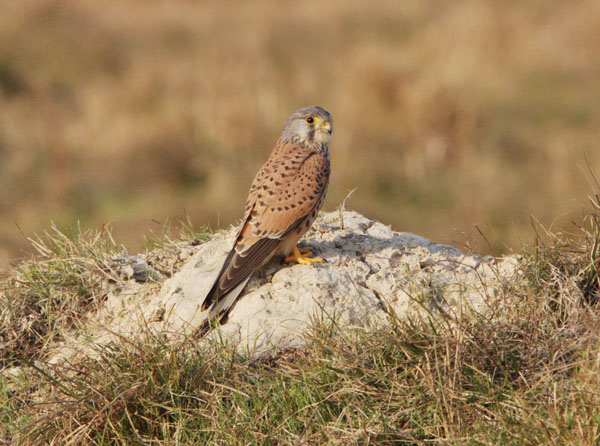Falco tinnunculus
IUCN
LCBasic Information
Scientific classification
- name:Falco tinnunculus
- Scientific Name:Kestrel, Red Hawk, Yellow Hawk, Red Kite
- Outline:Raptor
- Family:Falconiformes Falconidae Falco
Vital signs
- length:305-360mm
- Weight:173-335g
- lifetime:12-16year
Feature
The national bird of Belgium, the highly adaptable falcon is one of the most common birds of prey in the country.
Distribution and Habitat
The distribution range is very wide. In China, it is widely distributed in almost all areas except the hinterland of the desert. Abroad, it is widely distributed in the Palearctic and Paleotropical realms, and some hibernate in the southern part of the distribution area and the Oriental realm.
It can be found in cities, villages, and various primitive habitats. It often moves alone or in pairs in open areas. It nests in human buildings, cliffs, cracks in hillside rocks, soil holes, tree holes, and old nests of other birds in trees. It perches on electric wires, stumps, dead branches, high places on cliffs and rocks, or hovers in the air at a fixed point, waiting to prey on rodents and amphibians and reptiles. Passerine birds, frogs, lizards, squirrels, snakes and other small vertebrates, as well as locusts, beetles and other insects are also its common food choices. It often eats while flying in the air.
Appearance
A small bird of prey, a falcon with a relatively small body. The wing fingers are not obvious. It often spreads its long tail feathers to form a fan shape when circling and hovering. The red back contrasts sharply with the black wing tips. There are obvious sideburns under the eyes. The chest and abdomen are light yellow, and the dotted spots on them can often be connected into fine vertical stripes. The back of the male bird is brick red with black spots, the head is blue-gray, and the tail is white with no stripes, only a thick black outer edge. The back of the female bird and immature birds is reddish brown, densely covered with dark horizontal stripes, the head is the same color as the back, and the tail has multiple horizontal stripes with a thick dark outer edge.
Details
The red kestrel is one of the small birds of prey of the Falconidae family and the genus Falcon. It weighs 173-335 grams and is 305-360 mm long. It has narrow and pointed wings and a long tail. Its appearance is very similar to that of the common kestrel. The male has a blue-gray head, brick-red back and wing coverts with triangular black spots; the waist, tail coverts and tail feathers are blue-gray, the tail has a wide black sub-terminal spot and a white terminal spot, and there is a vertical downward black mustache under the eye. The chin and throat of the lower body are milky white or brownish white, and the rest of the lower body is milky yellow or brownish yellow, with black-brown vertical stripes and spots. The upper body of the female bird is brownish red from head to tail, with black-brown vertical stripes and horizontal stripes, and the lower body is milky yellow, except for the throat, it is covered with black-brown vertical stripes and spots, with black vertical stripes under the eye. The feet and toes are yellow, and the claws are black.

The kestrel often hovers in the air, searching for small vertebrates on the ground, such as mice, passerine birds, frogs, lizards, squirrels, snakes, etc. It also eats locusts, grasshoppers, crickets and other insects. The kestrel hunts during the day, mainly searching in the air, flying against the wind in the air, or flying low in search of prey. It often flaps its wings and makes a short stop in the air to observe its prey. Once it locks on the target, it folds its wings and dives down to pounce on the prey, then suddenly flies up from the ground and rises quickly into the sky. Sometimes it stands high on the cliffs and rocks, or stands on the top of the tree and the electric pole to wait, and pounces on the prey when it appears.
Call: a sharp and high call a ak yak yak yak yak.








